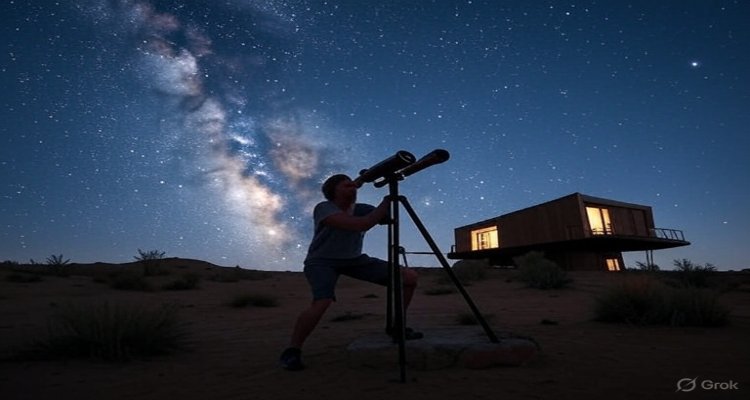Dark Sky Tourism: The New Luxury of Starlight
Dark sky tourism is emerging as a luxury escape, offering travelers pristine night skies, stargazing experiences, and a rare connection to the cosmos.
Introduction: A New Luxury Written in the Stars
In a world where city lights never fade and glowing screens consume every spare moment, the luxury of darkness has become a rare commodity. Enter dark sky tourism—a growing travel trend that invites people to step away from neon skylines and rediscover the unspoiled brilliance of the cosmos. More than a vacation, it is a return to something timeless: the starlit skies that guided humanity for millennia.
Context & Background: Escaping the Glow of Civilization
Urbanization has created sprawling constellations of artificial light. Today, over 80% of the world’s population lives under light-polluted skies, and in some regions, the Milky Way is no longer visible to the naked eye. Scientists have warned that excessive light pollution affects not only human circadian rhythms but also ecosystems dependent on natural cycles of darkness.
In response, destinations across the globe—from remote deserts to mountain retreats—are carving out sanctuaries of starlight. These designated dark sky reserves and parks, certified by organizations like the International Dark-Sky Association (IDA), have become the backdrop for a new type of high-end tourism.
Main Developments: From Remote Escapes to Curated Star Journeys
Dark sky tourism is no longer limited to avid astronomers with telescopes. It has expanded into a luxury travel niche where curated experiences meet cosmic wonder. Resorts in places like New Mexico, Chile’s Atacama Desert, and Iceland now offer guests access to state-of-the-art observatories, private stargazing sessions, and even astrophotography workshops.
Tech-savvy travelers are also embracing apps that map constellations in real time, blending ancient navigation with modern tools. Meanwhile, boutique travel companies are creating itineraries that combine wilderness treks, cultural storytelling, and celestial viewing—transforming stargazing into a holistic, memory-rich adventure.
Expert Insight & Public Reaction: A Shift Toward “Luxury of Silence”
Astrophysicist Dr. Nadia Perez explains, “For centuries, the night sky was humanity’s calendar and compass. Dark sky tourism restores that lost relationship with the universe. It’s not just about science—it’s about awe.”
Travel analysts echo this sentiment, noting that the luxury travel market is shifting from material indulgence to experiential depth. “The wealthiest travelers today aren’t always chasing gold-plated suites,” says travel consultant Mark Hollister. “They’re chasing moments that feel rare, unrepeatable, and soul-stirring. A pristine night sky offers exactly that.”
Social media reactions highlight this allure. Instagram is now filled with breathtaking astrophotography tagged with #DarkSkyTourism, as travelers seek to capture not just stars, but the feeling of standing under infinity.
Impact & Implications: A Movement With Purpose
The rise of dark sky tourism is more than an indulgence—it carries significant ecological and cultural implications. By drawing attention to light pollution, these experiences encourage sustainable practices, from dimmer urban lighting to preservation of rural nightscapes.
Communities near dark sky reserves also benefit economically. Small towns in Utah, Namibia, and rural Spain, once overlooked by mainstream tourism, now thrive as gateways to cosmic exploration. This influx supports local businesses while reinforcing the need to protect fragile environments.
Yet, there are challenges. Increased tourism risks disrupting the very tranquility visitors seek. Experts urge a balance between accessibility and conservation to ensure the starlight remains undimmed for future generations.
Conclusion: Looking Upward, Together
Dark sky tourism is more than a passing trend—it is a reminder of what it means to belong to the cosmos. In a culture defined by constant noise and illumination, the silence of the stars feels revolutionary. Travelers who once sought luxury in exclusivity now find it in the shared wonder of looking upward.
As cities continue to expand and artificial light floods our nights, the demand for darkness may well become the defining luxury of the 21st century. Starlight, once an ordinary gift of nature, is now a rare treasure—and one worth traveling for.
Disclaimer : This article is for informational and educational purposes only. It does not constitute travel, scientific, or environmental advice. Readers are encouraged to verify details, check official tourism resources, and consult professionals before making travel plans.











